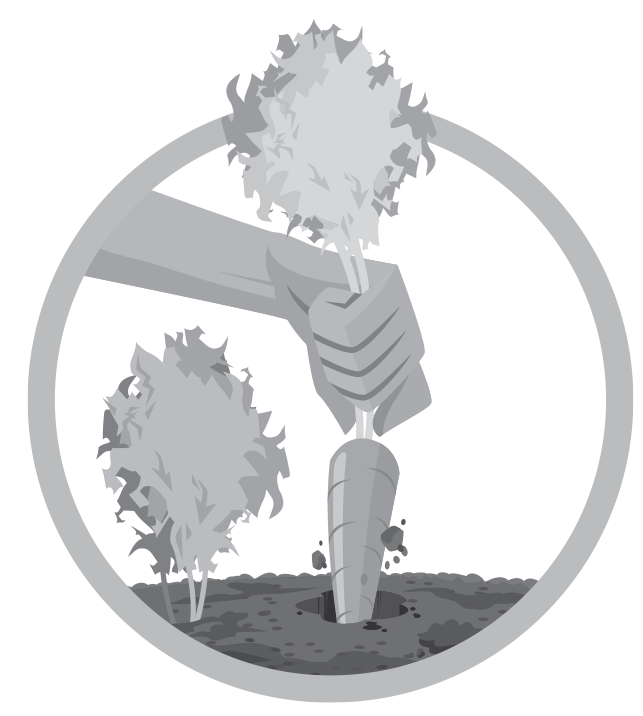This lesson is part of a series called, Edible Plant Parts. These lessons allow students and teachers to examine the six basic plant parts—roots, stems, leaves, flowers, fruits, and seeds—in a unique way. Through hands-on activities, students will learn about the different plant parts, as well as how to include fruits and vegetables into their daily meals as part of a healthy diet. Students will also learn about agriculture and the people who produce our food. The remaining lessons can be found at the following links:

Students will be fascinated to learn that when eating carrots, sugar beets, potatoes, or radishes for dinner they are eating roots. Roots typically have four functions—anchoring the plant in the soil, absorbing nutrients such as water and minerals, transporting nutrients to other parts of the plant, and storing food. Acting as a lifeline to a plant, roots transport nutrients to the leaves for proper growth. Roots also help prevent soil erosion by keeping the soil in place. For this lesson, students' experience with eating vegetables that live and grow underground is required for helping them gain an understanding for the functions of roots and their nutritional value when eaten.
There are two types of root systems—fibrous and tap. Fibrous roots are normally formed by thin, moderately branching roots that grow from the stem. These types of roots are not edible and can be found in plants such as grasses, ferns, and most flowering plants. A tap root system is characteristic of the roots that we eat such as carrots, beets, radishes, and turnips. The tap root is a straight tapering root growing vertically downward, rather than branching out as seen in a fibrous root system. Both root systems have tiny, microscopic outgrowths from the outer layer of the roots called root hairs that help absorb more water and nutrients from the soil.
Roots are an important part of the agricultural plant production process for farmer. A healthy root system underground grows a healthy plant above ground. Roots take in nutrients, air, and water which help crops produce higher yields during harvest, the time or process in which grain, vegetables, or fruit is picked. Roots also provide stability to plants during harsh weather conditions such as high winds and rainfall. If any developmental stage of the root system is compromised, the plant could suffer and produce lower crop yields.
For some plants, such as rutabagas, radishes, carrots, and sugar beets, the root is the crop. These root crops grow best in loose, well-drained soil and people eat these roots to obtain essential nutrients for a healthy diet. Tubers, such as potatoes and sweet potatoes, are also known as a type of root crop. A tuber is a short, thickened, fleshy part of the plant that grows an underground stem which can grow new shoots. Tuber crops are different than root crops because they contain an enlarged stem rather than a root, if cut up a tuber can grow a plant of itself, and a tuber contains more starch than a root crop. Both root and tuber crops provide a large source of carbohydrates in addition to vitamins and minerals.

